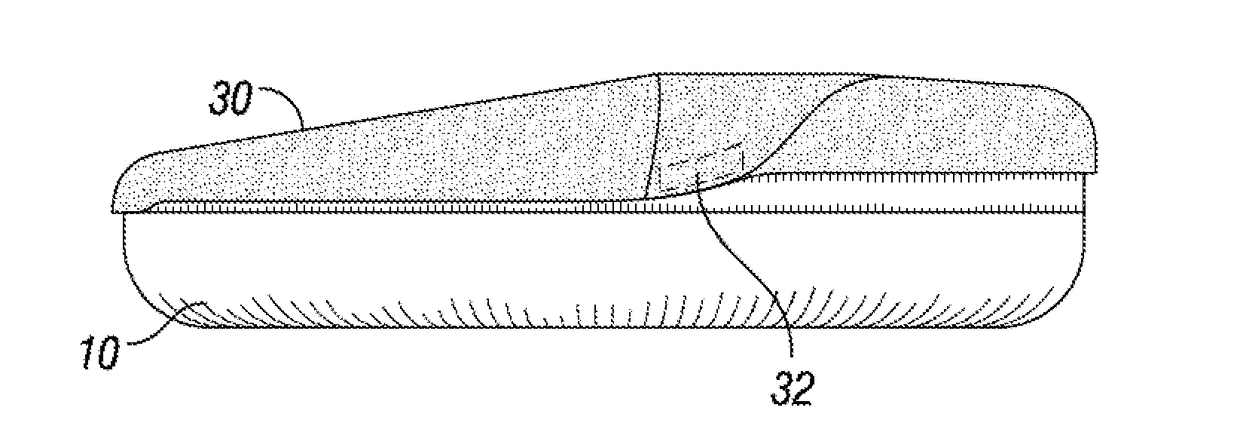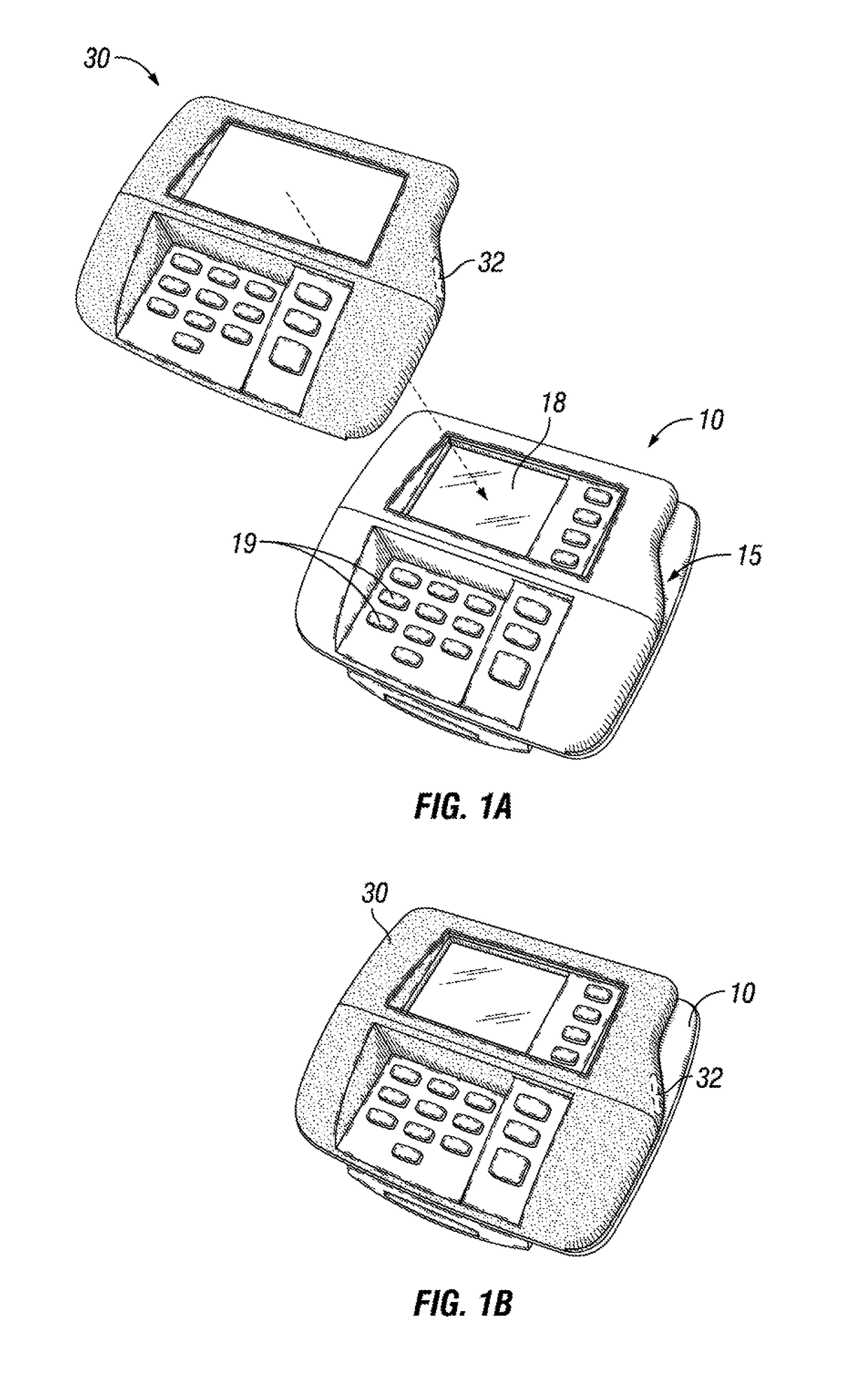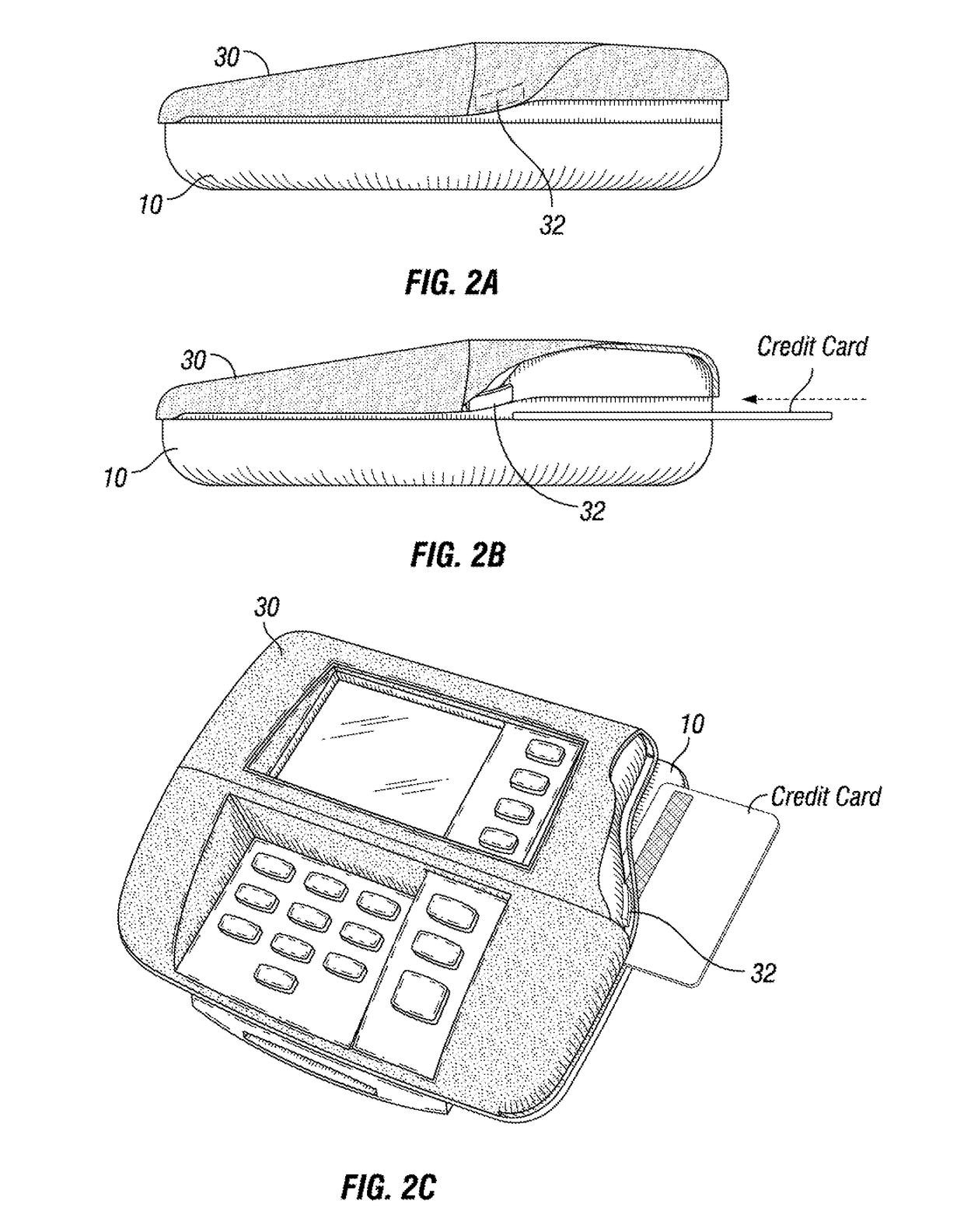Skimmer blocker
- Summary
- Abstract
- Description
- Claims
- Application Information
AI Technical Summary
Benefits of technology
Problems solved by technology
Method used
Image
Examples
Embodiment Construction
[0022]Turning now to the detailed description of the preferred arrangement or arrangements of the present invention, it should be understood that the inventive features and concepts may be manifested in other arrangements and that the scope of the invention is not limited to the embodiments described or illustrated. The scope of the invention is intended only to be limited by the scope of the claims that follow.
[0023]As shown in FIGS. 1A, 1B, 2A, 2B, and 2C, a credit / debit card reader is generally indicated by the numeral 10. The card reader 10 includes a slot 15 at the right for sliding a credit card or debit card for completing a purchase or payment transaction. The card reader 10 further includes a screen 18 and buttons 19 for displaying transaction information and taking additional information such as personal identification numbers (PIN) or zip code information or other authenticating information.
[0024]Aligned to fit over the card reader 10 is a skimmer 30. The skimmer 32 is a ...
PUM
 Login to View More
Login to View More Abstract
Description
Claims
Application Information
 Login to View More
Login to View More - R&D
- Intellectual Property
- Life Sciences
- Materials
- Tech Scout
- Unparalleled Data Quality
- Higher Quality Content
- 60% Fewer Hallucinations
Browse by: Latest US Patents, China's latest patents, Technical Efficacy Thesaurus, Application Domain, Technology Topic, Popular Technical Reports.
© 2025 PatSnap. All rights reserved.Legal|Privacy policy|Modern Slavery Act Transparency Statement|Sitemap|About US| Contact US: help@patsnap.com



